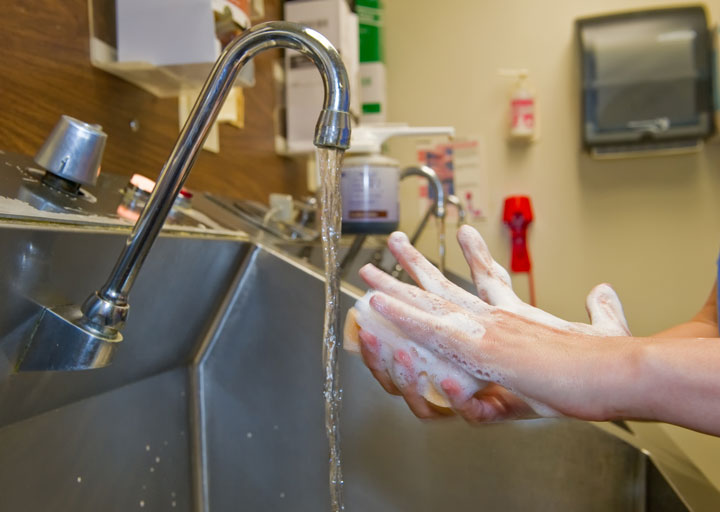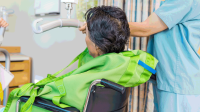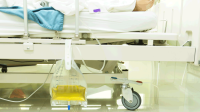We know what to do, but we don’t always do it.


WITH the launch of American Nurse Today’s new monthly section on infection prevention, I want to highlight the pivotal role nurses play in preventing hospital-acquired infections (HAIs). A recent report in Infection Control & Hospital Epidemiology, the journal of the Society for Healthcare Epidemiology of America (SHEA), states that healthcare organizations could reduce HAIs by more than half simply by sharpening efforts with existing infection control practices. More than half? That got my attention.
The article makes a compelling case and one that nurses and nursing leaders dedicated to evidence-based practice can understand. We know what to do according to the science, we just don’t apply those practices consistently. According to the article, up to 55% of HAIs could be eliminated by implementing evidence-based infection prevention and control strategies with systems approaches that consider the organization as a whole and the individual behaviors of those who practice in it.
“Healthcare-associated infections come at a considerable expense to patients and families, but also cost the U.S. healthcare system an estimated $9.8 billion each year,” said Keith Kaye, MD, MPH, president of SHEA and a healthcare epidemiologist, in a written statement. “There have been tremendous advancements in developing strategies to prevent and control HAIs. This study demonstrates a need to remain vigilant in identifying and maintaining key infection control processes to ensure they can be optimally used to prevent infections, which in some cases are life-threatening.”
Researchers reviewed 144 studies published around the world between 2005 and 2016 to determine the number of HAIs prevented through infection control interventions across many different settings (urban, rural, various country income levels). The researchers say that interventions designed to “prevent at least one of the five most common HAIs consistently produced a 35%–55% reduction in new infections, an impressive finding considering the large number of HAIs hospitals fight every year.”
The best performance was for prevention of central line–associated bloodstream infections. Other studied infections included catheter–associated urinary tract in- fections, surgical site infections, ventilator-associated pneumonia, and healthcare-associated pneumonia.
What does this mean? There is no miracle cure for HAIs. The study’s findings revealed that even wealthier, more developed countries with greater advances in infection control aren’t necessarily doing a better job at combating illnesses.
Kaye said that “Healthcare institutions have a responsibility to improve the quality of patient care and reduce infection rates by effectively implementing customized, multifaceted strategies and improve patient outcomes.”
Nurses are in the unique position to create a safe patient care environment. Nurses from the bedside to the boardroom can be powerful sources of change, especially when working as a team to protect patients from harm. Foster a healthy care environment and prevent infection-related errors from occurring through personal accountability and safe practice advocacy. Nurses demonstrate their leadership, knowledge, skill, and judgment every day and there has never been a better time to step up.
In addition to your organization’s policies and procedures, consider these three proven strategies:
1. Educate everyone on the dangers. Knowing how important preventing infections is and the most effective ways to avoid them should be a constant mantra for everyone, including patients and families.
2. Think about the floor when thinking about germs. How are germs being carried from room to room, unit to unit? They attach to shoes, wheeled carts, and bags and suitcases placed on the floor. A recent study suggests that wheelchairs could be a major source of pathogen transmission.
3. Make handwashing mandatory and put consequences in place for nonadherence. Handwashing is a potent weapon, when consistently done.
I’m hearing about clever but to-the-point initiatives such as “Go Ahead, Bug Me to Wash My Hands.” Let us know what’s working in your organization to prevent HAIs. And thank you for all you do every day.


Lillee Gelinas, MSN, RN, CPPS, FAAN
Editor-in-Chief
Selected references
The nurse’s role in preventing hospital-acquired infections. AMN Healthcare Education Services. 2015. rn.com/nursing-news/nurses-role-in-preventing-hospital-acquired-infections
Palmer J. Study: More than half of hospital infections could be prevented with proper protocols. Patient Safety & Quality Healthcare. February 6, 2019. psqh.com/analysis/study-more-than-half-of-hospital-infections-could-be-prevented-with-proper-protocols-2/#
Schreiber PW, Sax H, Wolfensberger A, et al. The preventable proportion of healthcare-associated infections 2005–2016: Systematic review and meta-analysis. Infect Control Hosp Epidemiol. 2018;39(11):1277-95.
Wolfensberger A, Clack L, Kuster SP, et al. Transfer of pathogens to and from patients, healthcare providers, and medical devices during care activity—A systematic review and meta-analysis. Infect Control Hosp Epidemiol. 2018;39(9):1093-107.
ant5-Gelinas-417


















1 Comment.
I am having difficulty getting into the on line continuing education test. It redirects me to the home page each time.